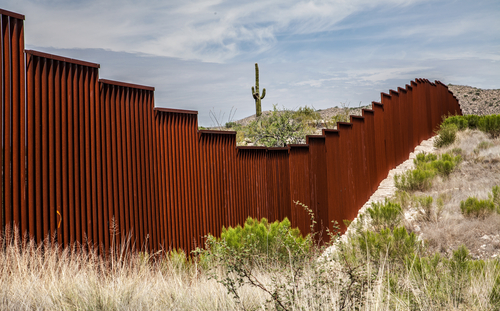
In a House Homeland Security subcommittee hearing this week, representatives from the three Department of Homeland Security (DHS) Joint Task Force sectors testified to the effectiveness of their current border security practices against foreign operations.
The hearing sought to examine the strategies of the Joint Task Forces on combating and dismantling Transnational Criminal Organizations (TCOs) along the southern U.S. border with Mexico and featured testimony from directors and commanders of those forces.
“In 2003, The Department of Homeland Security was created from 22 disparate agencies. It should not be surprising that there would be significant growing pains before that agency would function as a truly unified department,” Border and Maritime Security Subcommittee Chairwoman Martha McSally (R-AZ) said in her opening statement. “Several years ago, then Secretary (Jeh) Johnson took a page from the Department of Defense playbook and created three joint task forces in an attempt to eliminate stovepipes and foster unity of effort along the border.”
The goal was simple, she said. The task forces – JTF-East, JTF-West and JTF Investigations (JTFI) – would be used to establish a streamlined structure that prioritized and unified border security operations and investigations against the cartel actors most meaningful to the United States.
“Joint Task Forces were established to enhance unity of effort, build regional cooperation, and define operational priorities,” Vice Admiral Karl Schultz, director of JTF-East, said. “Under the JTF construct, DHS components in the field are working in close collaboration to develop standard operational plans supporting regional operations to defeat these criminal networks.”
TCOs are the main goal of the three task forces, Schultz said, noting that continued progress on enhancing unified efforts, building regional cooperation and more clearly defining operational priorities is instrumental in defeating them.
“TCOs are adaptive and resilient, investing a significant amount of resources and time in adjusting tactics to subvert our efforts,” Schultz said. “Combating TCOs will continue to be a priority for the JTFs, as they play a key role in our layered border security strategy. As JTFs mature, they will continue to strengthen cooperation within DHS and improve coordination both internationally and across the whole of government enterprise.”
JTFI Director Janice Ayala said that one of the major benefits of the unified efforts and information sharing between the task forces is the strengthening of foreign partnerships in the apprehension and seizure of TCO personnel and shipments.
“We always want to engage in as far away from the U.S. border as possible,” Ayala said. “So our intentions have always been to train host countries to strengthen their laws and investigative services to work on priority investigations for issues that have impact on both sides of the border.”
The key, Ayala said, is to pursue every element from a network point of view.
“We want to look at prioritizing TCO threats,” Ayala said. “We have to look at a network instead of one group or one cartel, because it is the TCO networks that are impacting the national arena.”
Chief Paul Beeson, commander of JTF-West, said that the task forces make up a whole-of-government approach.
“Prior to the creation of these task forces, I felt like we had a very good relationship with our DHS partners, but I did see it get better,” Beeson, who joined the U.S. Border Patrol in 1985, said. “We were able to get more assets to come together and look at threats to identify priorities and then take the appropriate law enforcement consequences that we needed to take against those priorities.”
Still, there is work to be done to bolster the unified efforts not only being carried out by JTF-East, JTF-West and JTFI, but DHS on the whole.
Rebecca Gambler, director of Homeland Security and Justice Issues at the Government Accountability Office, discussed the various recommendations made to DHS border operations, including the development of metrics to assess the contributions of patrol and vehicle fencing to border security when making investment and resource allocation decisions.
“The department has not established those metrics and assessments to provide information for looking at which investments are yielding which types of results and to help inform decision making, whether it’s technologies, additional infrastructure, additional manpower,” Gambler said. “And that information gathering is why DHS implementing the recommendations we have made is so important.”
Ayala also spoke to the need for more resources in justice system staffing within JTFI.
“What we really need are more assistant U.S. attorneys to support our investigations, to provide more prosecutorial services” Ayala said. “We can go out and make 20 times more cases, but if we don’t have court support, then we can’t do anything.”




